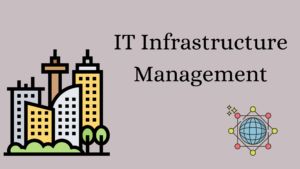
The efficient management of IT infrastructure is an ever-evolving challenge for organizations, regardless of size. With the influx of new technologies and systems into the workplace, it is becoming increasingly difficult to maintain a reliable and secure network. To help organizations keep their infrastructure up-to-date, here are five of the top challenges they should be aware of when implementing and managing their IT infrastructure:
1: Increasing complexity
As technology continues to evolve, IT infrastructure management is becoming increasingly complex. To keep up with the ever-changing landscape of the IT world, it’s important for businesses and organizations to stay on top of the challenges that come with managing a large and diverse IT infrastructure. The following are five of the most common challenges faced by IT infrastructure managers today, along with potential solutions for overcoming them:
Securing data in an increasingly digital world: With more information being stored digitally than ever before, there is a need for strong security measures to protect sensitive data from cyber threats. Some steps that can be taken include implementing robust encryption techniques, using multi-factor authentication systems when possible, and regularly scanning and monitoring network traffic for any suspicious activity.
2: Demand for more availability and security
As businesses continue to adopt digital technologies and move their processes online, they are faced with the challenge of managing their IT infrastructure. Managing an IT infrastructure can be a complicated task, as there is a need to ensure availability and security while keeping up with the ever-increasing demand for more technology. Here are five of the top challenges that businesses face when it comes to managing their IT infrastructure:
1. Scalability: With the growth of technology, companies need to be able to scale up quickly in order to meet customer demands. This requires efficient planning and deployment strategies that allow for flexibility in terms of scalability.
2. Security: With cyber threats becoming increasingly sophisticated, organizations must create secure systems that cannot easily be breached by malicious actors. They must also have robust incident response plans in place in case something does go wrong.
3: Lack Integration & vendor freedom
IT infrastructure management is a challenging task for many organizations, as it involves the coordination of multiple components to ensure optimal system performance. One of the major problems that can arise in IT infrastructure management is the lack of integration and vendor freedom. This can have a huge impact on the efficiency and reliability of an organization’s IT systems.
To make matters worse, when IT infrastructure is highly dependent on vendors, this dependency often leads to increased costs and reduced flexibility in terms of scaling up or down with changing business needs. Furthermore, limited integration capabilities means that different components will have difficulty communicating with each other leading to potential bottlenecks in data flow within the network. These challenges add up quickly making it difficult to manage an organization’s IT infrastructure effectively and efficiently.
4: Legacy devices
For most organizations, IT infrastructure management is a complex and challenging task. With the vast number of systems, networks and devices in play, it can be difficult to keep track of all the moving parts. One of the biggest challenges faced by IT infrastructure managers is that of legacy devices; older technology which may be difficult or impossible to upgrade or replace.
Legacy devices are often incompatible with current software and hardware requirements, making them a significant issue for IT infrastructure management teams. Furthermore, many legacy systems are highly specialized pieces of equipment designed for specific tasks with no modern equivalents available on the market – making them even more difficult to work with. In order to alleviate this challenge, organizations must develop strategies to ensure that their legacy devices remain compatible with new systems and technologies as they become available over time. This requires careful planning and maintenance in order to avoid any disruption caused by incompatibility issues.
5: Multiple devices
IT managers working with an enterprise network have to deal with a variety of challenges when it comes to managing the IT infrastructure. One of the biggest challenges is dealing with multiple devices and keeping them organized, secure and available.
The complexity of having various types of devices on the same network can be overwhelming for many IT managers. Managing the different operating systems, hardware configurations, applications and security settings across each device can be a daunting task. Additionally, managing updates and patches for each device can also be a tedious process.
In order to ensure that all devices are running smoothly and securely within their environment, IT managers must develop processes for keeping track of all components as well as regular maintenance schedules. They must also ensure that there is adequate protection from malicious attacks by implementing strict security protocols across all devices in the system.